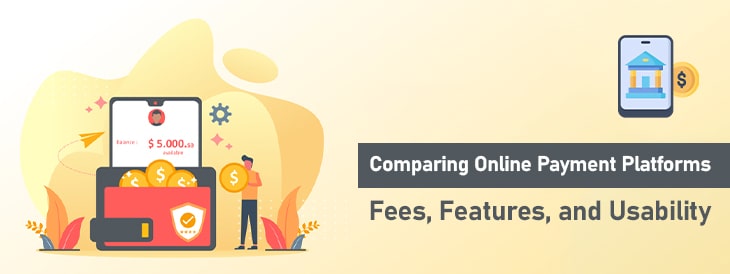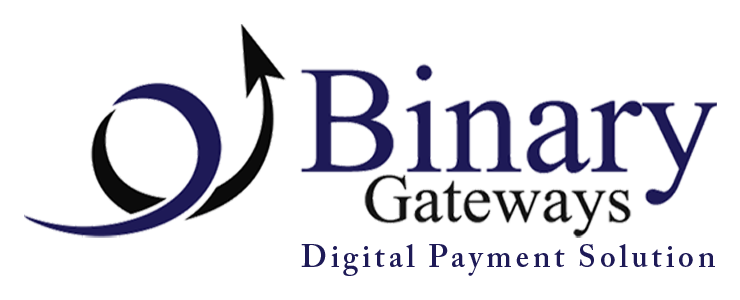Comparing Online Payment Platforms: Fees, Features, and Usability
Comparing Online Payment Platforms: Fees, Features, and Usability

Introduction to Online Payment Platforms
In an era where digital transactions dominate, online payment platforms have emerged as indispensable tools for both businesses and consumers. These platforms provide a secure and convenient method for executing various types of transactions, including online shopping, bill payments, and peer-to-peer money transfers. The sheer variety of available platforms, each with its own unique features, can make the selection process overwhelming.
The main appeal of online payment platforms lies in their ability to simplify and streamline the payment process. By offering a one-stop solution for managing financial transactions, these platforms can significantly reduce the time and effort required for both personal and business finance management. Additionally, they often come with user-friendly interfaces and robust customer support, making them accessible even to those who are not particularly tech-savvy.
One of the critical aspects to consider when choosing a platform is its security features. Top-tier platforms utilize advanced encryption and fraud detection technologies to safeguard user information. Many also comply with industry standards such as PCI DSS, ensuring a high level of data protection.
Another important factor is integration capabilities. The best platforms can seamlessly connect with e-commerce websites, accounting software, and other essential business tools, thereby reducing the need for manual data entry and minimizing the risk of errors. This makes them not only convenient but also highly efficient.
In addition, the usability and accessibility of these platforms are crucial. A well-designed platform that is compatible with both mobile and desktop devices can offer a smoother user experience. As mobile commerce continues to grow, having a platform that functions seamlessly on smartphones and tablets is increasingly important.
Some Related Blogs
- Top Online Payment Platforms for Small Businesses in 2025
- High-Risk Payment Gateways vs. Traditional Payment Gateways: Key Differences
- The Future of High-Risk E-commerce Payment Gateways: Trends to Watch
- What Makes an E-commerce Business High-Risk and How to Find a Payment Gateway for It
Fee Structures
When evaluating online payment platforms, it’s crucial to understand the various fee structures. Many platforms charge a percentage of each transaction, often accompanied by a fixed fee. For example, you might encounter a fee of 2.9% plus $0.30 per transaction. These charges can differ based on the transaction type, such as domestic versus international payments.
Aside from the standard transaction fees, there may be additional costs to consider. Some platforms impose fees for currency conversion, which can add up if you deal with multiple currencies. Chargebacks, a common issue for businesses, can also incur extra costs, adding to the overall expense. Monthly account maintenance fees are another factor that could affect your budget, especially if you process a large volume of transactions.
To avoid unexpected expenses, it’s essential to thoroughly review the platform’s fee schedule and terms. While some platforms may advertise low rates, the hidden fees can quickly accumulate, making the overall cost higher than anticipated. Always check for any additional fees related to premium services or special features that might be required for your specific needs.
Different platforms have varying fee structures for businesses and individual users. Some might offer volume discounts for larger businesses, while others could have tiered pricing plans based on the number of transactions processed per month. It’s worth comparing these details to find the best fit for your situation.
Understanding the complete fee structure can help you make a more informed decision and choose a platform that aligns with your financial expectations. Hidden costs and additional fees can significantly impact your overall costs, so a detailed analysis is vital.
Key Features of Top Platforms
When considering online payment platforms, it’s important to focus on the features that differentiate them from one another. One of the primary aspects to evaluate is the range of payment options supported. Top platforms typically accept various payment methods, including credit and debit cards, bank transfers, and digital wallets, making them versatile for both businesses and consumers.
Another crucial feature is the level of customization available. Many platforms offer customizable checkout pages, allowing businesses to tailor the user experience to align with their brand identity. Customization options can also extend to invoicing and reporting, enabling businesses to generate detailed financial reports and invoices that meet their specific needs.
Consider p
Customer support is another key factor. Leading platforms provide robust support options, including 24/7 customer service, detailed FAQs, and live chat features. Effective customer support can be invaluable in resolving any issues promptly, thereby minimizing downtime and ensuring a smooth operation.
Fraud prevention tools are essential for safeguarding transactions. The best platforms offer real-time monitoring and machine learning algorithms to detect and prevent fraudulent activities. Features such as two-factor authentication and address verification systems (AVS) add extra layers of security.
Scalability is also important for businesses anticipating growth. Top platforms are designed to handle varying transaction volumes efficiently, making it easier to scale operations without experiencing performance issues. Many offer APIs and developer tools to facilitate integration with other systems, providing flexibility as your business evolves.
Finally, analytics and reporting capabilities can provide valuable insights into transaction trends and customer behavior. Advanced platforms offer comprehensive dashboards and customizable reports, allowing businesses to make informed decisions based on real-time data.
User Experience and Accessibility
Ease of use is a crucial factor in the success of any online payment platform. A platform with an intuitive interface can make the payment process simpler and more efficient. Look for platforms that offer clear navigation and accessible features that cater to both tech-savvy users and those less familiar with digital transactions.
Another important aspect is the platform’s design. A responsive design ensures that the platform works seamlessly across various devices, including desktops, tablets, and smartphones. As mobile commerce continues to rise, having a platform that functions smoothly on mobile devices is increasingly important for capturing a wider audience.
Additionally, accessibility features such as multi-language support and options for users with disabilities can significantly enhance the user experience. These features not only make the platform more inclusive but also broaden its appeal to a global audience.
Customer support options also play a vital role in user experience. Platforms that provide comprehensive support, including live chat, phone support, and detailed help guides, can make it easier for users to resolve issues quickly and continue their transactions without delay.
Finally, the speed and reliability of transactions are essential. A platform that offers quick processing times and minimal downtime can greatly improve user satisfaction, making it a preferred choice for both businesses and consumers.
![]()
Email us anytime!
Email customer service 24/7 at info@binarygateways.com
![]()
Call us anytime!
Reach customer care 24/7 at (801) 761-5001
